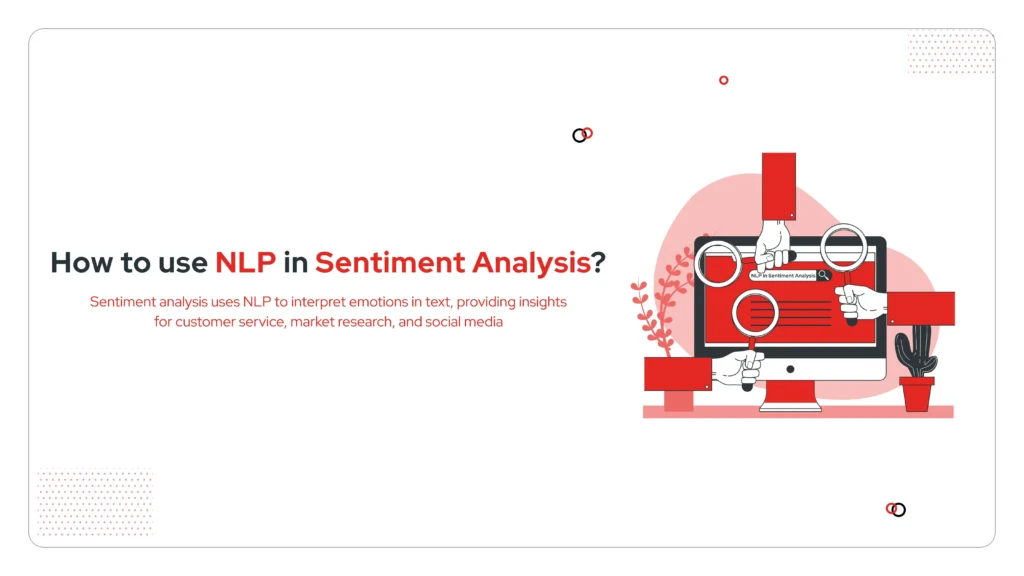
Sentiment analysis, a powerful application of Natural Language Processing (NLP), aims to understand and interpret the emotional tone and subjective opinions expressed in text or speech. By analyzing language, sentiment analysis can determine whether the sentiment is positive, negative, or neutral. This capability has profound implications across various domains, from customer service and market research to social media monitoring and political analysis.
Understanding the Core: What is Sentiment Analysis?
At its core, sentiment analysis seeks to extract the emotional undercurrents within human language. It goes beyond simply understanding the literal meaning of words and delves into the subjective feelings, attitudes, and opinions conveyed by the text. This can range from outright praise or criticism to more nuanced emotions like disappointment, frustration, or excitement.
What are the Three Types of Sentiment Analysis?
Fine-grained Sentiment Analysis
This goes beyond simple positive/negative classifications. It aims to identify specific emotions like joy, anger, sadness, fear, surprise, and disgust. This level of granularity provides deeper insights into the emotional spectrum expressed in the text.
- Aspect-Based Sentiment Analysis
This focuses on understanding the sentiment associated with specific aspects or features mentioned in the text. For example, a product review would identify sentiments related to specific features like “camera quality,” “battery life,” or “customer support.”

Comparative Sentiment Analysis
This compares the sentiment expressed towards different entities or aspects. For example, it could compare customer sentiment towards competing products or services.
Can NLP Detect Sarcasm and Subtle Emotions?
Detecting sarcasm and subtle emotions presents a significant challenge in natural language processing (NLP) for sentiment analysis. Sarcasm often depends on context, tone, and social cues that are hard to capture in text. At the same time, subtle emotions like irony, cynicism, and empathy require a deep understanding of human language and social nuances. However, advancements in NLP techniques are continually addressing these complexities, enabling businesses to enhance sentiment analysis accuracy.
Key innovations include contextual embeddings like BERT and GPT, which analyze the context of words within sentences or entire documents to better grasp language nuances. Multimodal approaches integrate text analysis with images, audio, and video to provide richer context, improving the precision of emotion detection.
Additionally, emotional lexicons and dictionaries map words to emotions, helping identify subtle cues in textual data. As researchers refine these techniques, the ability of sentiment analysis tools to interpret complex human emotions is steadily improving. Businesses leveraging these advancements can gain deeper insights into customer feedback, improve brand monitoring, and optimize their SEO strategies by understanding and responding to the intricacies of consumer sentiment.
Implementing Sentiment Analysis with NLP: A Step-by-Step Breakdown
Step 1 – Data Collection
Gather the text data that you want to analyze. This could include social media posts, customer reviews, news articles, or any other form of textual data.
Step 2 – Data Preprocessing
Clean and prepare the text data for analysis. This may involve tasks such as:
- Tokenization: Breaking down the text into individual words or tokens.
- Stop Word Removal: Removing common words like “the,” “a,” “is,” and “are” that do not carry significant sentiment information.
- Stemming/Lemmatization: Reducing words to their root form (e.g., “running” to “run”).
Step 3 – Feature Extraction
Extract relevant features from the text data. This may involve techniques such as:
- Bag-of-Words: Representing text as a collection of words, ignoring word order.
- TF-IDF: Weighting words based on their frequency in the document and across the corpus.
- Word Embeddings: Representing words as dense vectors in a continuous vector space, capturing semantic relationships between words.

Step 4 – Model Selection and Training
Choose a suitable machine learning model for sentiment analysis, such as:
- Naive Bayes: A probabilistic classifier that calculates the probability of a text belonging to a particular sentiment class.
- Support Vector Machines (SVM): A supervised learning algorithm that finds the optimal hyperplane to separate data points into different classes.
- Deep Learning Models: Such as Recurrent Neural Networks (RNNs) and Transformers, can capture complex linguistic patterns and achieve high accuracy.
Step 5 – Model Evaluation
Evaluate the performance of the chosen model using appropriate metrics, such as accuracy, precision, recall, and F1-score.
Step 6 – Sentiment Prediction
Use the trained model to predict the sentiment of new, unseen text data.
Real-World Uses of NLP in Daily Life
Social Media
Sentiment analysis algorithms power the sentiment analysis tools available on social media platforms, helping you understand the overall sentiment of conversations and identify trending topics.
News and Media
News organizations use sentiment analysis to analyze news articles and social media posts to understand public opinion on current events.
Customer Service
Many businesses use sentiment analysis to monitor customer feedback on social media, review websites, and customer support channels. This helps them identify areas for improvement and enhance customer satisfaction.
Personalized Recommendations
Online platforms use sentiment analysis to understand your preferences and provide personalized recommendations for products, services, and content.
Search Engines
Search engines use sentiment analysis to understand the sentiment behind search queries and provide more relevant results.
Conclusion
Sentiment analysis is a rapidly evolving field with the potential to transform how we understand and engage with human language. By harnessing the power of NLP, we can uncover valuable insights into emotions and opinions, enabling smarter decision-making, enhanced customer experiences, and more effective communication. With sentiment analysis services now widely offered by businesses, accessing these insights has become even easier, streamlining processes and delivering meaningful solutions to everyday challenges.